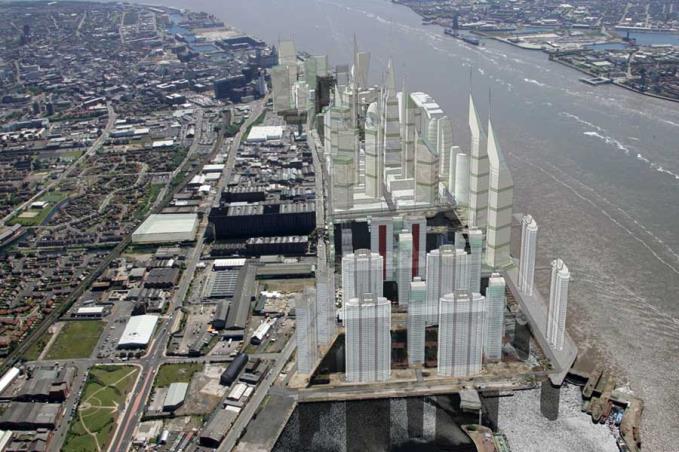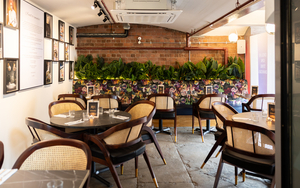GLOBAL glossy magazine publisher Conde Nast has singled out World Heritage Sites in Afganistan, Syria - and Liverpool - as places to see before they disappear.
The company's US edition Traveler magazine identifies nine endangered UNESCO sites and urges readers to find out which ones "you might be running out of time to visit.”
Liverpool comes in at number 6 in the Conde Nast list, two places ahead of the world's oldest city, Aleppo, in Syria. Afghanistan's Baniyan Valley also features, as does the Old City of Jerusalem and the medieval monuments of Kosovo - all at risk because of fierce conflicts present and past.
Liverpool, says Traveler, is special because it’s "more than just the Beatles hometown".
Explaining why the site is in danger of vanishing forever, it says: “Developers want to put up more new buildings, but UNESCO regulations require that nothing be taller than the existing structures, including St George's Hall, a Neoclassical building famous for its stone lions, and the Pier Head complex, which houses the Museum of Liverpool.”
The urgent travel advisory from Conde Nast comes as Unesco’s World Heritage Committee continues its meeting in Bonn to discuss the state and the imminent fate of various world heritage sites.
 In peril: The citadel at Aleppo in Syria
In peril: The citadel at Aleppo in SyriaAfter receiving reports on Liverpool, the committee has decided Liverpool’s WHS must remain on its "In Danger" list.
The issue is whether developments, particularly Peel’s Liverpool Waters project, will compromise the Outstanding Universal Value (OUV) of the World Heritage Site. This involves critical sight lines and the heights of proposed buildings.
Mayor Joe Anderson said in his 2012 New Year report that Liverpool Waters was too important an opportunity to pass up and to enable it he would be willing to sacrifice Liverpool's World Heritage Status which he described as "a certificate on the wall in the Town Hall". Just months later, UNESCO placed the city on its 'In Danger' list where it has been sitting ever since.
A virtual 18-month moratorium is now in place regarding any work starting on schemes within the Central Docks area of the Liverpool Waters site.A report has been demanded by the committee, from the British government, to be tabled by the end of next February detailing what measures are being taken to enable consideration to be given to removing the "In Danger" tag. UNESCO wants to know what measures are being taken by the Government, Liverpool City Council and Peel to protect the OUV of the heritage site.
 The Liverpool Waters masterplan could put spell an end to Liverpool World Heritage Site but the sacrifice of 'a certificate on the wall of the Town Hall' is worth it, said Mayor Joe Anderson in 2012
The Liverpool Waters masterplan could put spell an end to Liverpool World Heritage Site but the sacrifice of 'a certificate on the wall of the Town Hall' is worth it, said Mayor Joe Anderson in 2012
Heritage campaigner Wayne Colquhoun, of the Liverpool Preservation Trust, said: “The World Heritage Committee was discussing Liverpool at the same session it was considering the deliberate destruction of the WHS in Aleppo and atrocities at sites in the Yemen, Delegates were almost in tears at the destruction of World Heritage sites, and up pops Liverpool and the potential threats to our site.
“World heritage is a very serious matter and it is up to countries to look after our cultural history for the benefit of civilisation. To have a WHS on your doorstep puts you in an elite league of just a few places across the world.
“As a proud citizen of my home town I watched the World Heritage Committee debating Liverpool literally in the same breath as the Taliban atrocities at cultural sites was very disappointing.
“We have seen some lovely old Regency buildings demolished in Dale Street, across the road from the Municipal Buildings, as well as some Georgian town houses in Duke Street. As the Portugese delegate on the committee said at the meeting we ‘need to keep our fingers crossed’ as far as Liverpool is concerned.”
Meanwhile, the city council says the number of historically-significant listed buildings deemed to be ‘at risk’ of falling into dilapidation, has fallen to a 24-year low, according to new figures.
The World Heritage Committee was considering the deliberate destruction of Aleppo and atrocities at sites in the Yemen. Delegates were almost in tears - and up pops Liverpool
“As of the end of June, just 96 out of a total of 2,679 are said to be ‘at risk’. This is down from 351 in 1991 and 142 in 2009,” said the council.
The council spokesman said it’s anticipated a further 25 buildings across the city will have either been repaired or will undergo full refurbishment within the next 12 months, including St Luke’s Church and Heaps Rice Mill which is set to become residential accommodation as part of a larger development project in the Baltic Triangle.
Mayor Joe Anderson said: “It’s important that we protect and enhance the heritage of our great city for future generations. These buildings have shaped not only the Liverpool’s history, but the country’s and the wider world’s.”
He added: “The team responsible for these impressive figures have my thanks - and I’m sure the whole city’s - for the important work they’ve done in preserving our civic heritage. It’s a huge challenge because many of the buildings are not in the ownership of the council.
“However we are not complacent and know there is more work to be done.”
Buildings still on the list include the Wellington Rooms (the former Irish Centre in Mount Pleasant) and churches including St Bride’s, St James and the Welsh Prebyterian Church - all in Liverpool 8, All Saints Church in Liverpool 7, Greenbank Drive Synagogue in Liverpool 17 and Holy Trinity Church in Liverpool 5. Liverpool City Council is working in partnership with Historic England on rescuing each, it says.
A new bid to the Heritage Lottery Fund for Townscape Heritage Funding has been prepared for the Ropewalks and Chinatown area of the city and, if successful, will provide funding for the Nelson Street area, as well as other key sites in Ropewalks, part of which is in the World Heritage Site.
Further reading from the archive, here













